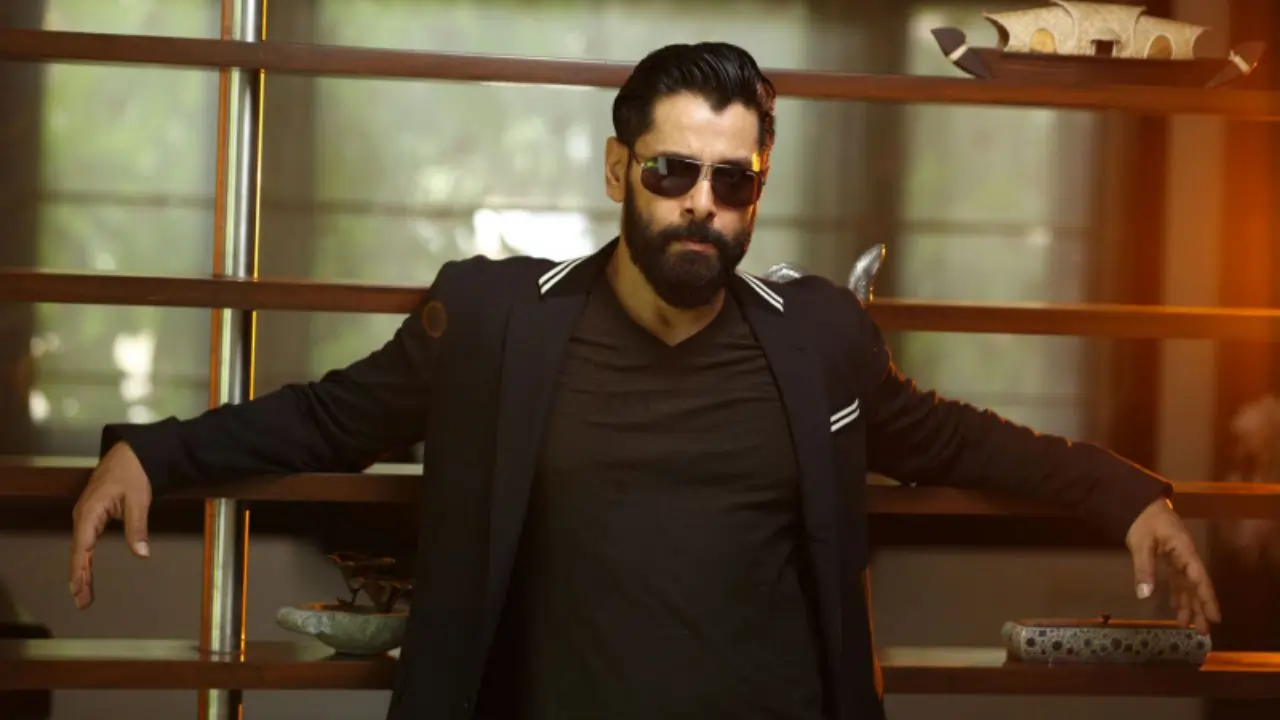
Yoga for anxiety: 7 simple yoga poses to feel better
6 months ago | 5 Views
Feeling stressed and overwhelmed? Try yoga. A natural way to calm your nerves, practising yoga for anxiety can help you get rid of negative thoughts. It combines physical exercise with mindfulness and calms the mind, reduces stress, and promotes overall well-being. Whether you have persistent anxiety or experience regular episodes of stress, yoga can be a wonderful tool for relaxation. Gentle positions, deep breathing exercises, and meditation can help you develop inner calm and resilience. However, it is important to do these yoga asanas correctly, otherwise you may experience adverse affects. Read on to understand how and why people turn to yoga for anxiety.
What is anxiety?
Anxiety is a sensation of fear, dread, and unease. It may cause you to sweat, become restless and agitated, and have a fast heartbeat. It could be a normal response to stress. For example, you may have anxiety when confronted with a challenging situation at work, before taking a test, or before making a critical decision. It can help you cope. Anxiety may give you more energy or help you focus. However, for persons suffering from anxiety disorders, the worry is persistent and can be overwhelming, as found in a study published in the Medicine Plus.
What are the causes of anxiety?
Anxiety can be caused by a variety of factors, including stressful life events, genetics, imbalances in brain chemicals, underlying medical conditions, substance abuse, and personality traits. Major life changes, inherited tendencies, and chemical imbalances can all contribute to anxiety, as found in a study published in the StatPearls. Additionally, medical conditions, substance abuse, and certain personality traits can increase the likelihood of experiencing anxiety. Check out other causes of high functioning anxiety, and its symptoms.
Yoga for anxiety: How does it help?
Regular practice of yoga poses or asanas, may help to alleviate anxiety by encouraging physical relaxation, increasing body awareness, and soothing the mind, states a study, published in the International Journal of Preventive Medicine. The physical postures stretch and strengthen the muscles. This, in turn, soothes the nervous system, reducing tension and anxiety. Yoga poses may also promote body awareness, allowing people to become more attuned to their bodily sensations and reduce the tendency to focus on negative thoughts. Yoga poses may be an effective strategy for managing and reducing anxiety because they combine physical relaxation with mental focus.
Best yoga poses for anxiety
Here are some easy and effective yoga poses for anxiety:
1. Easy pose or sukhasana
Sukhasana or easy pose, is a simple and comfortable seated posture that can be used for meditation or relaxation. It is a good starting pose for beginners who may find other seated postures challenging, explains yoga expert Dr Hansaji Jayadeva Yogendra.
How to do it:
1. Sit on the floor.
2. Bring your legs together and bend your knees.
3. Place your feet flat on the floor, soles facing each other.
4. Sit up straight with your back erect.
5. Rest your hands on your knees, palms facing down.
6. Close your eyes and take deep, slow breaths.
2. Dancer pose or Natarajasana
Natarajasana or dancer pose is a challenging balancing pose that requires strength, flexibility, and concentration. It is ideal for overcoming stress and anxiety. Check our the other benefits of Natarajasana to know how it helps us.
How to do it:
1. Stand tall with your feet together.
2. Bend your right knee and reach back with your right hand to grab your right ankle.
3. Lift your right leg behind you, keeping your thigh parallel to the floor.
4. Lean forward and extend your left arm upward, reaching for your right foot.
5. Once you have a firm grip on your ankle, straighten your right leg.
6. Gaze out at the horizon.
7. Hold the pose for 15-30 seconds, breathing deeply.
8. Release the pose and repeat on the other side.

3. Couch pose or Paryankasana
Paryankasana, or couch pose, is a comfortable seated posture that can be used for relaxation or meditation. It is a good option for those who find it difficult to sit in full lotus or half lotus.
How to do it:
1. Sit on the floor with your legs extended in front of you.
2. Bend your right knee and bring your right foot towards your left hip.
3. Place your right foot on the mat, sole facing up.
4. Bend your left knee and bring your left foot towards your right hip.
5. Now place your left foot on the mat, sole facing up.
6. Sit up straight with your back erect.
7. Rest your hands on your knees, palms facing down.
8. Close your eyes and take deep, slow breaths.
4. Fish pose or Matsyasana
Matsyasana or fish pose is a gentle backbend that can help stretch the chest, shoulders, and abdomen. It is ideal for improving concentration and relaxation. Check out the variations of Matsyasana here.
How to do it:
1. Lie on your back with your legs extended and your arms by your sides.
2. Bend your elbows and place your palms flat on the floor, underneath your buttocks.
3. Press your palms into the floor and lift your chest off the mat.
4. Arch your back as much as you comfortably can.
5. Rest the crown of your head on the floor.
6. Hold the pose for 15-30 seconds, breathing deeply.
7. Release the pose and return to the starting position.
5. Cobra pose or Bhujangasana
The gentle backbend of cobra pose can help reduce stress and tension in the body. By stretching the chest and shoulders, it can open up the airways and improve breathing, which can promote relaxation.
How to do it:
1. Lie on your stomach with your legs extended and your feet together.
2. Place your palms flat on the floor, directly underneath your shoulders.
3. Press your palms into the floor and lift your chest off the mat.
4. Keep your hips pressed to the floor.
5. Arch your back as much as you comfortably can.
6. Keep your neck neutral and avoid straining it.
7. Hold the pose for 15-30 seconds, breathing deeply.
8. Release the pose and return to the starting position.
6. Wind relieving pose or Pavanamuktasana
While pavanamuktasana is primarily used for physical benefits like relieving abdominal discomfort and improving digestion, it can indirectly help with anxiety. By relieving physical discomfort and tension in the abdomen, pavanamuktasana can promote relaxation and reduce overall stress.
How to do it:
1. Lie on your back with your legs extended.
2. Bring your right knee towards your chest, clasping your hands around it.
3. Press your knee gently into your abdomen.
4. Inhale deeply and exhale as you release your knee towards the floor.
5. Repeat on the other side.
6. For a deeper stretch, bring both knees towards your chest and clasp your hands around them.
7. Corpse pose or Shavasana
Shavasana, or corpse pose, is a relaxation pose that's often used at the end of a yoga practice. It's a simple yet powerful pose that allows you to completely relax and release any tension or stress from your body and mind.
How to do it:
1. Lie on your back on a comfortable surface.
2. Spread your legs slightly wider than hip-width apart.
3. Place your arms by your sides, palms facing upward.
4. Close your eyes and take a few deep breaths.
5. Focus on relaxing each part of your body, starting with your toes and working your way up to your head.
6. Let go of any thoughts or worries, and simply allow yourself to relax and rest.
7. Hold the pose for 5-10 minutes, or longer if you like.

Side effects of yoga poses for anxiety
While yoga is generally considered safe and beneficial for managing anxiety, it is important to practice it with caution and listen to your body. Here are some potential side effects, as pointed out by the expert.
- Aggravation of existing conditions: If you have a pre-existing condition, such as a herniated disc or a recent injury, certain yoga poses might aggravate your symptoms.
- Dizziness or lightheadedness: Some poses, especially those that involve inversions or balancing, can cause dizziness or lightheadedness, especially if you're not used to them.
- Overexertion: Pushing yourself too hard can lead to fatigue, muscle soreness, or even injury.
- Increased anxiety: In some cases, certain yoga poses might temporarily worsen anxiety, especially if they trigger physical discomfort or stress.
Precautions while doing yoga for anxiety
Here are a few things that you should keep in mind:
- Start slowly: Begin with gentle poses and gradually increase the intensity as you become more comfortable.
- Listen to your body: If you experience any pain or discomfort, stop the pose immediately.
- Practice with a qualified instructor: A yoga teacher can guide you through the poses safely and offer modifications if needed.
- Avoid poses that aggravate your symptoms: If certain poses make your anxiety worse, avoid them.
Remember, yoga is a personal practice. It is important to find what works best for you and listen to your body's signals.
Read Also: Stand up and move around. It can save you from chronic back pain





















